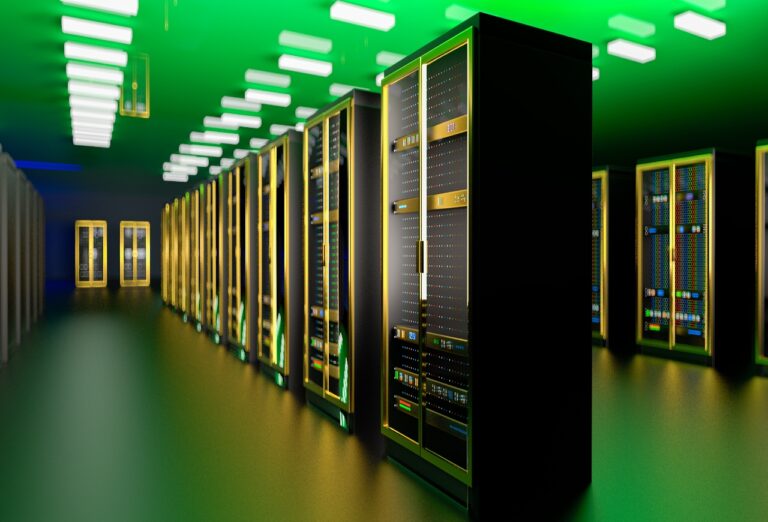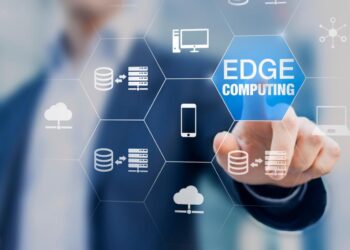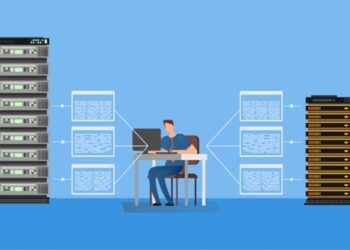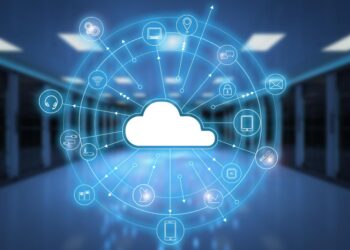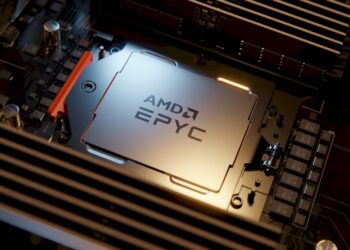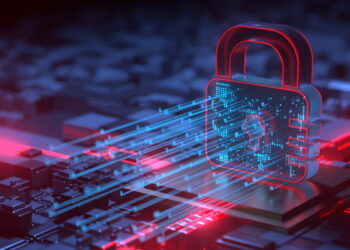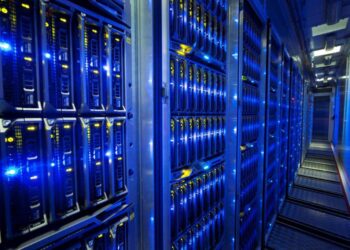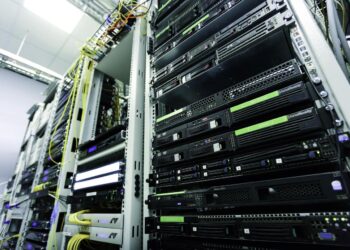In an increasingly digitized world, the backbone of our global economy and interconnected lives rests upon data centers. These vast facilities house thousands, sometimes millions, of servers that process, store, and manage the colossal amounts of data generated every second. However, this indispensable infrastructure comes at a significant environmental cost. Data centers are massive consumers of energy, accounting for a substantial portion of global electricity usage and contributing significantly to carbon emissions. The imperative for green server tech has never been more urgent. This movement is about much more than just saving money; it’s a commitment to sustainability, reducing environmental impact, and building a more responsible digital future. It encompasses a holistic approach to designing, operating, and managing servers and their surrounding infrastructure with a primary focus on energy efficiency and ecological responsibility.
The Environmental Footprint of Digital Demand
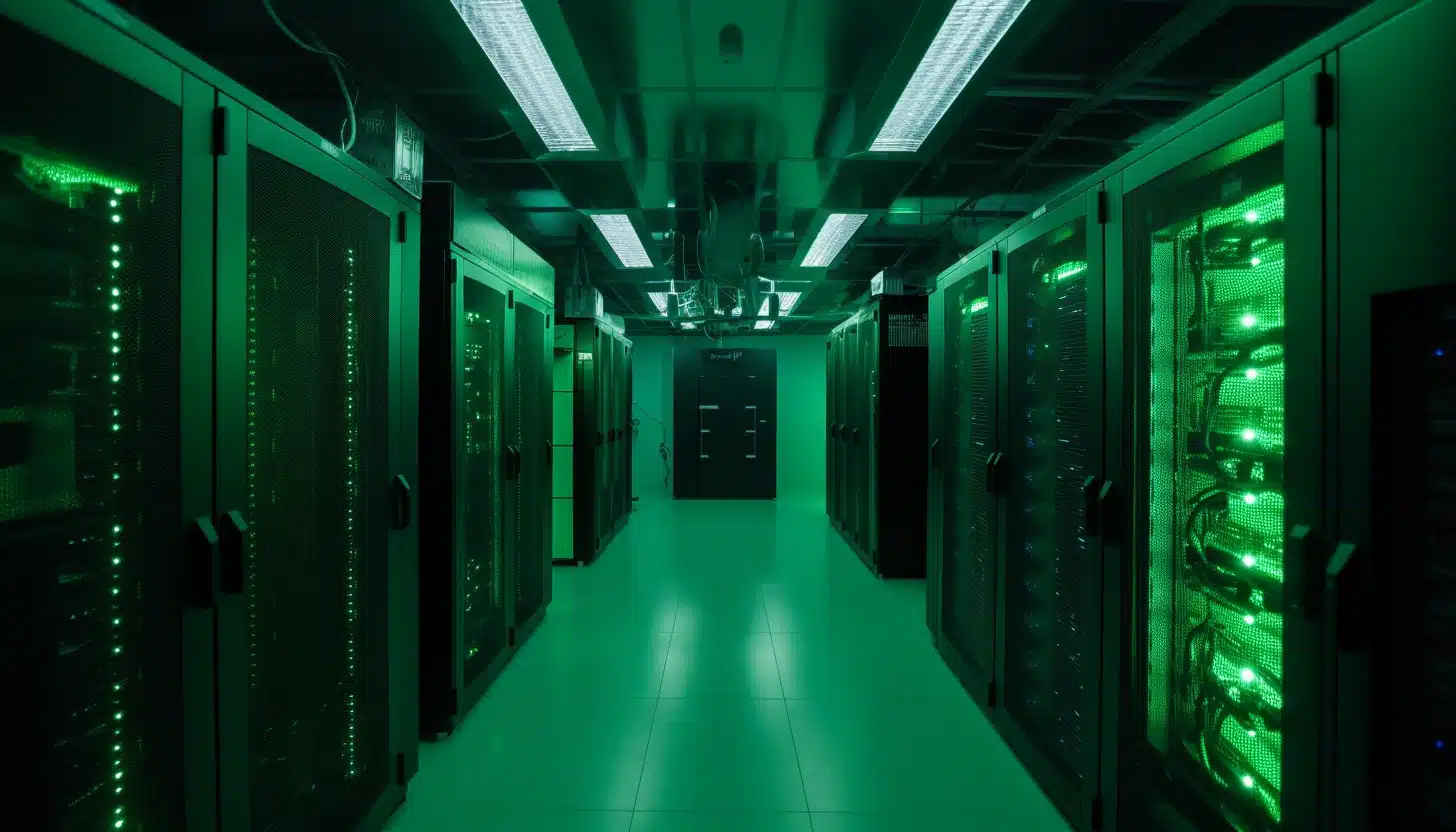
The burgeoning demand for cloud computing, artificial intelligence, streaming services, and the Internet of Things (IoT) fuels the exponential growth of data centers. While enabling incredible innovations, this growth presents a critical challenge: their environmental footprint.
- Energy Consumption: Data centers consume an estimated 1-3% of global electricity, a figure comparable to the electricity consumption of entire countries. This figure is projected to rise as digital demands continue to grow.
- Carbon Emissions: A significant portion of this electricity comes from fossil fuels, leading to substantial greenhouse gas emissions that contribute to climate change.
- Water Usage: Many traditional cooling systems in data centers consume vast amounts of water for evaporative cooling.
- E-Waste: The rapid refresh cycles of IT equipment generate significant electronic waste, much of which is not properly recycled.
Recognizing these impacts, the concept of green server tech has emerged as a crucial area of innovation. It’s about moving towards a future where our digital infrastructure is not only powerful and reliable but also environmentally sustainable. This involves a multi-pronged approach that integrates sustainable practices across hardware, software, cooling, power management, and overall data center design.
Core Pillars of Green Server Technology
Achieving genuine environmental responsibility in data centers involves optimizing every component and process for maximum efficiency and minimal impact.
A. Energy-Efficient Server Hardware
The journey to green server tech begins at the silicon level. Hardware manufacturers are continuously innovating to create more powerful yet less power-hungry components.
- Power-Efficient Processors (CPUs & GPUs): Modern processors are designed with advanced power management features, such as dynamic voltage and frequency scaling (DVFS), which allows them to adjust power consumption based on workload. They also incorporate deep sleep states (C-states, P-states) for idle periods. Choosing CPUs and GPUs optimized for performance per watt is crucial.
- High-Efficiency Power Supplies (PSUs): Servers themselves consume DC power, requiring an AC-to-DC conversion within their power supplies. “80 Plus” certified PSUs are standard, indicating high efficiency (e.g., Platinum and Titanium rated PSUs achieve 92-96%+ efficiency). This minimizes energy lost as heat during conversion.
- Solid State Drives (SSDs): Replacing traditional spinning Hard Disk Drives (HDDs) with SSDs dramatically reduces power consumption for storage, especially under heavy I/O workloads. SSDs have no moving parts, consume less power, and generate less heat.
- Optimized Motherboards and Chipsets: Manufacturers design server motherboards and chipsets to minimize power draw across all integrated components.
- Modular and Scalable Designs: Designing servers in a modular fashion allows for upgrades and scaling without replacing entire units, reducing waste and extending hardware lifespan.
B. Advanced Cooling Systems
Cooling is typically the largest consumer of energy in a data center, making it a prime target for green innovations.
- Hot/Cold Aisle Containment: This fundamental practice physically separates hot exhaust air from server racks from cold intake air. By preventing the mixing of airflows, cooling systems can operate more efficiently, requiring less energy.
- Free Cooling (Economizers): Utilizing ambient outside air or water to cool the data center when conditions allow.
- Air-Side Economizers: Draw cool outdoor air into the data center, either directly or indirectly via heat exchangers, to supplement or replace mechanical cooling.
- Water-Side Economizers: Use cool outdoor water (from rivers, lakes, or cooling towers) to pre-cool the chilled water loop.
- Evaporative Cooling: In dry climates, this technique uses the evaporation of water to cool the air, a highly energy-efficient method.
- Liquid Cooling: This revolutionary approach leverages the superior heat transfer properties of liquids (compared to air) for highly efficient heat removal.
- Direct-to-Chip Liquid Cooling: Coolant flows through cold plates mounted directly onto hot components like CPUs and GPUs. This captures heat extremely close to the source, significantly increasing cooling efficiency and allowing for higher power densities.
- Immersion Cooling (Single-Phase & Two-Phase): Submerging entire server components or even full racks into a non-conductive, dielectric fluid. This eliminates the need for server fans and traditional CRAC units, leading to drastic energy savings and ultra-high server density. The fluid directly absorbs heat and then releases it via a heat exchanger.
- Higher Operating Temperatures: Modern servers are engineered to operate reliably at warmer intake air temperatures (e.g., up to 27°C or 80.6°F) than previously thought. Raising the data center’s thermostat reduces the workload on cooling systems and saves substantial energy.
- Rear Door Heat Exchangers (RDHX): Liquid-to-air heat exchangers mounted on the back of server racks, capturing hot exhaust air before it mixes with room air, significantly improving the efficiency of heat removal.
C. Optimized Power Distribution and Management
Efficiently delivering power to servers and minimizing waste throughout the electrical infrastructure is crucial.
- High-Efficiency UPS Systems: Uninterruptible Power Supplies (UPS) provide backup power but can also be sources of energy loss. Modern modular and transformerless UPS systems boast efficiencies exceeding 97-99%, minimizing energy waste during power conversion.
- DC Power Distribution: Distributing power as Direct Current (DC) within the data center can eliminate multiple AC-DC conversion steps (e.g., from the grid to UPS, then to PDU, then to server PSU), reducing overall energy losses and simplifying the power chain.
- Intelligent Power Distribution Units (PDUs): Smart PDUs provide granular monitoring of power consumption at the rack and even outlet level. This data helps identify inefficiencies, allows for remote power cycling, and supports proactive energy management.
- Virtualization and Consolidation: Consolidating multiple virtual machines (VMs) onto fewer, more powerful physical servers reduces the number of physical machines that need to be powered and cooled. This is a foundational green tech strategy.
- Server Utilization Optimization: Actively managing and consolidating underutilized servers. “Zombie servers” (powered on but not performing useful work) are common energy drains. Identifying and decommissioning them saves significant power.
D. Renewable Energy Integration
Shifting the source of energy to renewables is a direct way to reduce the carbon footprint of data centers.
- On-Site Renewable Generation: Deploying solar panels or small wind turbines directly at the data center site to generate a portion of the required electricity.
- Off-Site Power Purchase Agreements (PPAs): Contracting directly with renewable energy generators (solar farms, wind farms) to purchase renewable electricity, effectively “greening” the data center’s energy supply even if not generated on-site.
- Green Energy Credits/Certificates: Purchasing renewable energy certificates (RECs) to offset conventional electricity consumption, though direct purchase PPAs are generally preferred for greater impact.
- Grid Integration and Demand Response: Smart data centers can become active participants in the energy grid, dynamically adjusting their power consumption or shifting workloads based on the availability of renewable energy or grid demand signals.
- Battery Storage: Integrating large-scale battery storage solutions can allow data centers to store renewable energy when abundant and use it during peak demand or when renewable sources are unavailable.
E. Waste Heat Reuse and Recycling
Turning data center waste heat from a liability into an asset is a pinnacle of green server tech.
- District Heating: Capturing the hot water or air generated by servers and piping it to nearby residential or commercial buildings for heating. This is a highly effective way to reduce overall energy consumption in a community.
- Industrial Processes: Utilizing waste heat for various industrial applications, such as preheating water, drying processes, or other thermal needs.
- Agricultural Applications: Directing waste heat to greenhouses to extend growing seasons or to aquaculture facilities to warm fish farms.
- Organic Rankine Cycle (ORC): Although less common for data centers currently, ORC technology can convert lower-grade waste heat into electricity, potentially generating additional power.
- Advantages: Significantly reduces the carbon footprint, creates new revenue streams or offsets heating costs, and dramatically improves the overall energy efficiency of the data center and its surrounding ecosystem.
F. Sustainable Data Center Design and Location
Decisions made during the initial planning stages of a data center can have a profound, long-term impact on its green credentials.
- Geographical Location: Choosing locations with naturally cooler climates maximizes the potential for free cooling. Proximity to renewable energy sources, reliable power grids, and fiber optic networks are also key considerations.
- Modular and Prefabricated Designs: These data centers are built in factory-controlled environments, allowing for highly optimized power, cooling, and space utilization, reducing waste during construction and operation. They are also easily scalable.
- Building Materials: Using sustainable, recycled, and low-embodied energy building materials for construction.
- Water Conservation: Designing cooling systems that minimize or recycle water usage, especially in water-stressed regions.
- Leadership in Energy and Environmental Design (LEED) Certification: Aiming for certifications like LEED, which encourage sustainable building practices and resource efficiency.
G. Software Optimization and Cloud-Native Approaches
Software choices also play a critical role in data center efficiency.
- Hypervisor Efficiency: Modern hypervisors are continually optimized for lower overhead, allowing for higher consolidation ratios and more efficient resource sharing on physical servers.
- Containerization (Docker, Kubernetes): Containers are lighter-weight than VMs, allowing for higher density of applications per physical server, leading to better resource utilization and energy savings. They share the host OS kernel, reducing overhead.
- Serverless Computing: This paradigm allows developers to run code without provisioning or managing servers. Cloud providers manage the underlying infrastructure, and users only pay for the compute time consumed. This can be extremely efficient for event-driven, intermittent workloads.
- Microservices Architecture: Breaking down monolithic applications into smaller, independent services allows for more granular scaling and efficient resource allocation, ensuring that only necessary resources are consumed.
- AI-Driven Workload Management: Artificial intelligence and machine learning algorithms can dynamically optimize workload placement across servers and data centers, shifting tasks to cooler regions or more energy-efficient hardware, leading to significant power savings.
H. Lifecycle Management and E-Waste Reduction
Minimizing electronic waste (e-waste) and promoting circular economy principles are crucial components of green server tech.
- Extended Hardware Lifespan: While performance demands often drive upgrades, maximizing the lifespan of IT equipment through proper maintenance, component upgrades, and responsible usage delays equipment replacement and reduces e-waste.
- Refurbishment and Reuse: When equipment is decommissioned, prioritizing refurbishment and reuse programs rather than immediate recycling. Donating older but still functional equipment to educational institutions or non-profits.
- Responsible Recycling: Partnering with certified e-waste recyclers who follow environmentally sound practices for dismantling and recovering valuable materials from decommissioned IT equipment, preventing toxic substances from contaminating landfills.
- Circular Economy Principles: Designing products with their end-of-life in mind, ensuring components are easily disassembled, repaired, reused, or recycled.
- Secure Data Erasure: Implementing secure data erasure practices before recycling or reusing equipment to protect sensitive information.
I. Monitoring, Metrics, and Compliance
You can’t manage what you don’t measure. Continuous monitoring is essential for green server tech.
- Power Usage Effectiveness (PUE): PUE is the most widely adopted metric for data center energy efficiency. A PUE of 1.0 is ideal (meaning all power goes directly to IT equipment). Regularly tracking PUE helps identify inefficiencies.
- Carbon Usage Effectiveness (CUE): Measures the amount of carbon emissions produced per unit of IT energy consumed.
- Water Usage Effectiveness (WUE): Measures the amount of water used for cooling per unit of IT energy consumed.
- Data Center Infrastructure Management (DCIM) Software: These tools provide comprehensive monitoring of power, cooling, and environmental conditions, offering insights into energy consumption patterns and helping identify areas for improvement.
- Compliance and Reporting: Adhering to relevant environmental regulations and industry standards (e.g., ISO 14001, corporate sustainability reports) and transparently reporting on energy consumption and emissions.
The Future of Green Server Technology

The pursuit of green server tech is an ongoing journey, and future innovations will continue to push the boundaries of sustainability.
- Further AI Integration: AI will become even more sophisticated in managing and optimizing data center operations, leading to dynamic, self-optimizing energy and cooling systems.
- Advanced Material Science: Research into new materials for server components and cooling fluids that are both more efficient and environmentally friendly.
- Hybrid Energy Grids: Data centers becoming integral parts of smart energy grids, actively participating in demand response and load shifting based on renewable energy availability.
- Quantum Computing’s Role: While quantum computers themselves might be energy-intensive to cool, their ability to solve complex optimization problems could lead to breakthroughs in energy efficiency across various industries.
- Edge Computing and Distributed Green: Extending green server tech principles to the rapidly growing edge computing landscape, designing compact, energy-efficient, and ruggedized solutions for distributed environments.
- Enhanced Circular Economy: Greater industry collaboration to establish robust circular economy models for IT hardware, minimizing waste throughout the entire supply chain.
Conclusion
The global digital transformation hinges on the relentless evolution of our data centers. However, this growth must be coupled with a profound commitment to environmental stewardship. Green server tech is not merely a niche trend; it is a fundamental shift towards a more sustainable and responsible approach to computing. By strategically investing in energy-efficient hardware, pioneering advanced cooling solutions, optimizing power distribution, integrating renewable energy, and embracing waste heat reuse, organizations can significantly reduce their environmental footprint and operational costs.
The continuous pursuit of efficiency, driven by intelligent management, robust monitoring, and a culture of sustainability, will ensure that data centers not only meet the escalating demands of the digital world but do so with minimal impact on our planet. The future of technology is inextricably linked with its ability to be green, and the ongoing innovations in server technology are paving the way for a digital future that is both powerful and profoundly sustainable.

